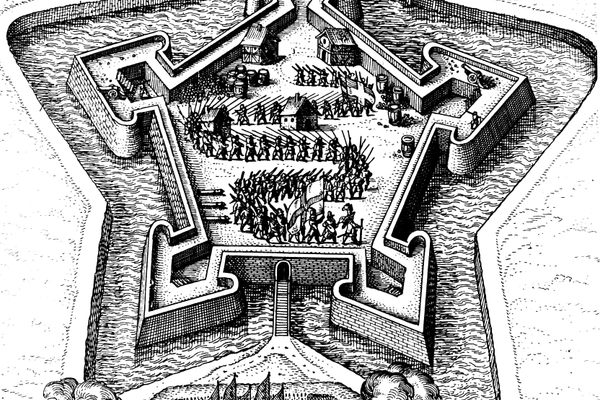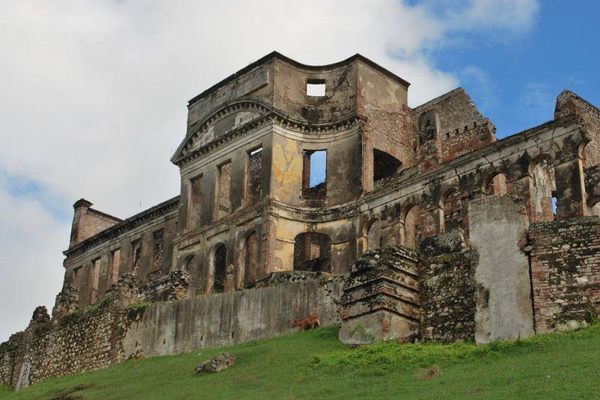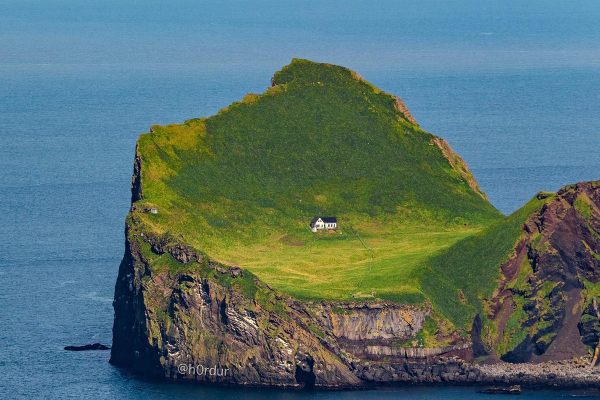Kazakhstan and the Illuminati in an Unfinished Metropolis
Astana city center (photograph by Darmon Richter)
Most people living in the western world know surprisingly little about Kazakhstan. Surprising, considering this Eurasian country ranks as the ninth largest nation on the planet. Yet it has a regional population of just 17 million, which is less than some cities and comparatively sparse for such a vast landmass. Kazakhstan nevertheless has an ancient and fascinating history. Did you know, for example, that these lands are believed to be the evolutionary birthplace of the apple?
In recent years, Kazakhstan has become better known in conspiracy circles for its dazzling new capital, Astana. The internet abounds with theories that highlight the rich thread of occult symbolism which seemingly runs through Astana’s futuristic architecture. Some of the more extravagant theories name it an Illuminati-funded, future Asian capital of the coming “New World Order.”
It’s easy to dismiss such conspiracy talk outright; but, for the sake of argument, we’ll take a look through some of the key points which form the basis of the assumption. First though, an introduction to the birth of the current Kazakh capital.
Supposed symbolism in Astana’s central plaza (photograph via David Icke)
The White Tomb
Astana is one of the world’s youngest cities. As late as 1997, the Kazakh capital was at Almaty, a city in the southeast, not far from the border with China. The official reasons for the move included seismic instability, volatile borderlands, and limited room for expansion, but it isn’t hard to guess at other, more patriotic motivations for the shift.
The “Ak Orda” presidential palace (photograph by Darmon Richter)
A statue celebrating Kazakh national identity (photograph by Darmon Richter)
Kazakhstan left the Soviet Union in 1990. While other nations of the former-USSR struggled on through what would become (for many) a decade of economic depression, the Kazakhs, meanwhile, struck oil. The 1991 discovery of rich oil reserves in the nation’s Caspian region invigorated the newly-independent country, and laid the foundations for what would become a culture of extravagance. Many observers have suggested that the change of capital was as much a declaration of national pride and independence as it was a purely pragmatic move.
Astana was built at incredible speeds, transforming the northern town of Ak Mola (the “White Tomb”) into a bizarre, dizzying metropolis. No expense was spared when it came to city planning; world-class architects (such as Britain’s Sir Norman Foster and Japan’s Kisho Kurokawa) were hired for a project that would become a multi-billion dollar exercise in futurism.
Today, the city remains unfinished. Many of its more elaborate zones and structures are complete, but with a large portion of its residential areas still in development, Astana remains low on human population. To this day, many government officials still commute to work by flying from the former capital at Almaty. At times, and particularly in some districts, it can feel like a ghost town. Such sensations only add to the effect of Astana’s peculiar blend of architectural styles.
For the conspiracy theorists however, it is the layout, the bare bones of this city, which is cited as the most symbolically significant.
Astana’s “Khan Shatyr” shopping and entertainment complex (photograph by Darmon Richter)
Astana’s Masonic Temple
Astana’s city center is as ripe with apparent symbolism as anything you’ll see. A paved promenade runs down the central Nurzhol Bulevard, from the otherworldly Khan Shatyr shopping center in the west, to the presidential palace in the east. The palace — named “Ak Orda” — is the official seat of Kazakh president Nursultan Nazarbayev, and stands flanked on either side by towering golden pillars.
Nurzhol Bulevard, Astana (photograph by Darmon Richter)
Stylized sketch of the typical layout for a masonic temple
If the layout doesn’t already remind you of something, then consider the basic form of a masonic temple: an altar placed in the center accompanied by twin pillars (“Joachim” and “Boaz”), while the Grand Master sits on a throne positioned in the east.
So far, so suspicious.
Added to that is the decorative Bayterek Tower, positioned at the heart of Astana’s central plaza. Its design was intended to illustrate an old Kazakh myth — the story of Samruk, “the magical bird of happiness,” which appears (under varying names) as a recurring fiction throughout the Turkic, Persian, Armenian, and even Byzantine traditions. The Bayterek Tower was designed to symbolize the bird’s golden egg, balanced between the branches of the tree of life.
The conspiracy theorists, however, have likened the Bayterek to a sun altar. Many conservative Christians are quick to draw parallels between sun worship and the worship of Lucifer, the “morning star.” At the very least, sun worship is recognized as a decidedly pagan pastime — and while links to masonic or Illuminati lore may be tenuous at best, the tower’s position in the west — the place of the setting sun — has nevertheless caused excited discussion in countless conspiracy forums.
The Bayterek Tower (photograph by Darmon Richter)
At the more extreme end of the conspiracy-spectrum are those who suggest that this magnified “temple” layout might allow for occult workings on a grand scale. As elaborate as such a scheme may sound, the concept of incorporating unwitting neophytes into city-sized ritualistic workings is not a new one. Take, for example, the similar claims made about the ceremonial passage of boats beneath London’s Tower Bridge during the 2012 Diamond Jubilee Pageant, or even the opening and closing ceremonies of the Beijing Olympics in 2008.
Those looking for clues (or confirmation) can turn their attention to the city’s annual carnival, Astana Day. Perhaps there’s some esoteric significance to the arrangement of floats, or the order in which performers pass between the golden pillars. For now though, our focus here remains with the city’s steel and concrete; the physical framework on which such theories have been sculpted.
The Eye in the Pyramid
Another Kazakh landmark raising eyebrows in conspiracy forums is the “Palace of Peace and Reconciliation.” Situated across the river from the Ak Orda Palace, on the edge of the city center, this large pyramid serves as a meeting place for the Kazakh congress. Its lower level contains a concert hall, while a middle floor hosts a large, circular (sun?) table around which affairs of state are decided. In its apex, a glass-walled mini-pyramid, an observation deck provides a 360-degree view of the city.
The Palace of Peace and Reconciliation (photograph by Darmon Richter)
Rising to a height of 77 meters, the pyramid certainly casts a striking silhouette on the city skyline; though in design, perhaps it need be considered no more bizarre than the Las Vegas Luxor, the Louvre in Paris, or in fact any of the world’s other great modern pyramids.
Nevertheless, certain theorists have suggested that the sun and dove motifs which decorate the Kazakh pyramid’s apex stand respectively for Satan, and for the superficial peace of a planet united beneath a New World Order.
However President Nazarbayev himself — the supposed “eye in the pyramid” — seems an unlikely choice as an Illuminati pawn. A lifelong communist, Nazarbayev has held positions in Soviet government since 1962, a political regime which opposed freemasonry at every opportunity. Meanwhile the accusations of corruption, money laundering, assassination plots, and abuse of human rights which have plagued Nazarbayev’s tenure since he took control of an independent Kazakhstan in 1990, seem utterly irreconcilable with the sophisticated, discreet, and shadowy nature of the hypothetical “Illuminati” of conspiracy theories.
Rather, all signs seem to point to a bid for recognition; a grand, imposing statement of independence, of wealth, and of national identity.
President Nazarbayev on a billboard in Almaty (photograph by Darmon Richter)
The presidential palace (photograph by Darmon Richter)
Final Verdict
So is Astana really an Illuminati stronghold? Is it the intended future capital of New World Order Asia?
It’s hard to accept that knowledgeable and experienced architects such as Sir Norman Foster (previously responsible for New York’s Hearst Tower, the restored Reichstag building in Berlin, Hong Kong International Airport, and a string of London constructions including the Millennium Bridge, the Gherkin, and Wembley Stadium) could have missed the clear design parallels between Astana city center and pretty much every masonic temple ever. Logic dictates that this is no accident.
However by applying Occam’s razor to the question, is it more likely that this signifies a sinister occult connection, or rather, a nod to the classics? Throughout Astana there are designs which echo ideas from Greek, Egyptian, Arabic, and Persian traditions. Throwing masonic themes into the mix as well, need be no more than symptomatic of a city designed to illustrate the future using the recycled selected highlights of the past.
Office buildings in the heart of Astana (photograph by Darmon Richter)
Another argument against the Illuminati theory lies in the quality of the construction work itself. Seen up close, many of Astana’s buildings are in poor shape. As construction continues throughout the city, those older buildings now approaching 15 years of age have been denied necessary maintenance and repairs. The harsh local climate does no favors to concrete, either — ranging from an average of 80°F in summer, down to 50 below in the coldest months.
The impression gained from taking a tour of Astana then, from exploring the city in depth and examining buildings both inside and out, is one of superficial charm. This is a metropolis built to impress — not a stronghold designed to survive world wars in order to rise as a future power center in accordance with some shady elitist plot.
Clearly, however, such reasonable deductions will never satisfy everyone; and for a confirmed conspiracy theorist — anyone out to prove that the world is in fact manipulated by the Freemasons / Illuminati / Lizard-people — Astana certainly provides a lot of material to get one’s teeth into.
Fireworks over Khan Shatyr (photograph via khanshatyr.com)
The interior of Khan Shatyr (photograph via khanshatyr.com)
Astana center with Bayterek Tower (photograph by Ken and Nyetta/Wikimedia)



















Follow us on Twitter to get the latest on the world's hidden wonders.
Like us on Facebook to get the latest on the world's hidden wonders.
Follow us on Twitter Like us on Facebook